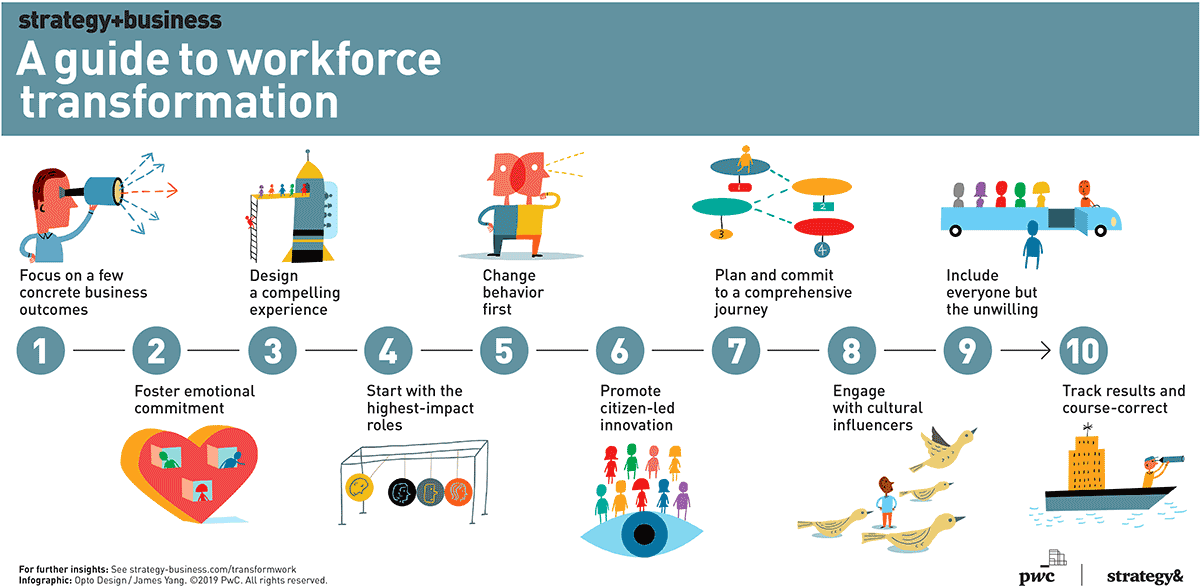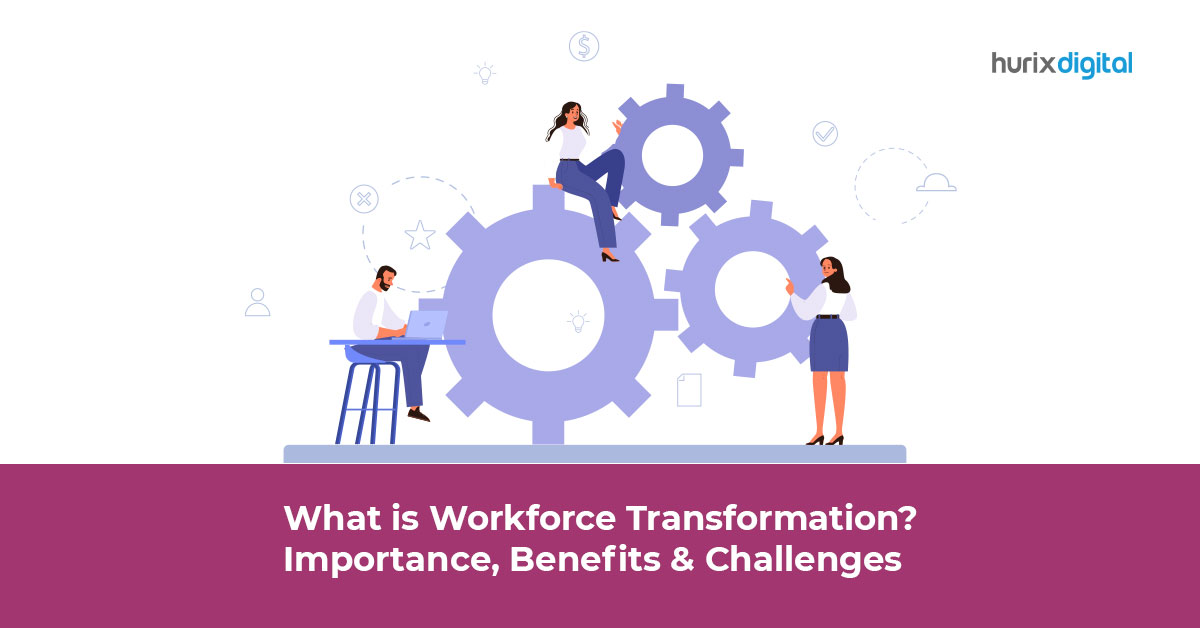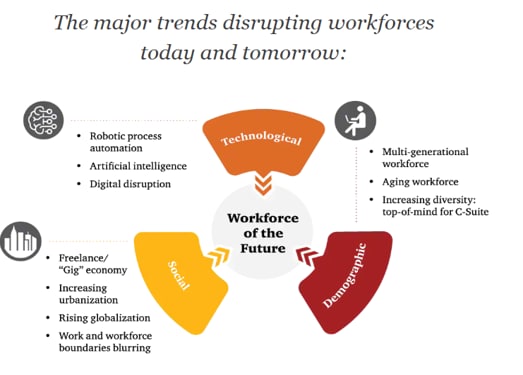Workforce Transformation: Adapting to a Future-Ready Workforce

In today’s dynamic world, the workforce is undergoing significant transformations to keep pace with technological advancements, changing societal expectations, and evolving business needs. Workforce transformation is not just a buzzword; it’s a strategic imperative for businesses looking to thrive in the future of work.
This article delves into the concept of workforce transformation, its importance, benefits, and challenges, and provides actionable insights to help businesses transition to a future-ready workforce.
What is Workforce Transformation?
Workforce transformation refers to the strategic process of reshaping an organization’s workforce to meet current and future demands. It involves integrating technology, re-skilling employees, and redefining workplace cultures to adapt to a rapidly changing world.
Key aspects include:
– Upskilling and reskilling employees.
– Leveraging digital tools for efficiency.
– Building an inclusive and diverse work environment.
Why is Workforce Transformation Necessary?
The modern workplace is in a state of flux due to:
– The rapid adoption of AI and automation.
– The rise of remote and hybrid work models.
– Shifting employee expectations regarding work-life balance.
Learn More: How technology shapes the workforce.
Benefits of Workforce Transformation

Transforming your workforce offers a multitude of benefits, including:
1. Enhanced Productivity
With access to cutting-edge tools and a well-trained workforce, businesses can boost productivity and operational efficiency.
2. Improved Employee Satisfaction
Investing in employee growth fosters loyalty, engagement, and satisfaction.
“When employees feel valued, they’re more likely to contribute meaningfully to an organization’s success.”
3. Competitive Advantage
Organizations that embrace transformation are better positioned to adapt to market trends and stay ahead of competitors.
4. Cost Efficiency
Automation and streamlined workflows reduce operational costs, enabling organizations to allocate resources effectively.
Key Strategies for Workforce Transformation

Achieving workforce transformation requires a deliberate and strategic approach:
1. Embrace Technology
Implement AI-driven tools, cloud computing, and collaboration platforms to enhance workflows.
2. Invest in Upskilling
Offer training programs to help employees acquire new skills that align with future organizational goals.
3. Foster Diversity and Inclusion
Create a workplace culture that celebrates diversity and promotes equity.
4. Adapt to Hybrid Work Models
Design flexible work policies to accommodate remote, hybrid, and in-office arrangements.
5. Measure and Monitor Progress
Use analytics tools to track the success of transformation initiatives and make data-driven decisions.
Explore More: Tools for workplace transformation.
Challenges in Workforce Transformation
Workforce transformation is not without its challenges. Here’s how to tackle them effectively:
1. Resistance to Change
Employees may resist new technologies or processes due to fear or uncertainty.
Solution: Communicate the benefits clearly and provide support through training and resources.
2. Skill Gaps
Organizations may struggle to find or train talent with the necessary skills.
Solution: Partner with educational institutions and invest in reskilling programs.
3. Budget Constraints
Implementing workforce transformation can be costly.
Solution: Prioritize initiatives with the highest ROI and scale efforts gradually.
4. Maintaining Employee Morale
Rapid changes can lead to stress and burnout.
Solution: Foster open communication and involve employees in decision-making processes.
Emerging Trends in Workforce Transformation

1. AI and Automation
Automation is reshaping industries, from manufacturing to finance. Organizations must train employees to work alongside machines.
2. Focus on Employee Wellness
Mental health and well-being have become central to workforce strategies, with companies offering flexible work options and wellness programs.
3. Remote Work Technologies
With remote work becoming mainstream, businesses are investing in tools like Zoom, Slack, and Asana to maintain productivity.
4. Lifelong Learning
Continuous learning has become essential to keep up with evolving job roles and technologies.
Learn More: The role of lifelong learning in workforce transformation.
Actionable Steps for Workforce Transformation
Step 1: Assess Your Current Workforce
- Identify skill gaps.
- Evaluate employee satisfaction levels.
- Review technological infrastructure.
Step 2: Define Your Goals
Set clear objectives for what you hope to achieve with transformation, whether it’s reducing costs, improving efficiency, or enhancing innovation.
Step 3: Engage Employees
- Involve employees in planning and decision-making.
- Provide regular updates about transformation initiatives.
Step 4: Implement Technology
Introduce tools and platforms that align with your organizational goals.
Step 5: Measure Success
Track metrics like productivity, employee engagement, and ROI to measure the effectiveness of transformation efforts.
FAQs About Workforce Transformation
Q1: What is the main driver of workforce transformation?
A: Technological advancements like AI and automation are major drivers, along with shifting employee expectations and market dynamics.
Q2: How long does workforce transformation take?
A: The timeline varies depending on the organization’s size, goals, and resources. It can range from a few months to several years.
Q3: What industries benefit most from workforce transformation?
A: Industries like tech, healthcare, manufacturing, and finance experience significant benefits, but every sector can gain value from transformation.
Q4: How does workforce transformation impact employees?
A: While it may initially create uncertainty, workforce transformation ultimately enhances job satisfaction by reducing monotonous tasks and offering growth opportunities.
Conclusion
Workforce transformation is the cornerstone of building a resilient, future-ready organization. By embracing technology, fostering employee growth, and adapting to new work models, businesses can unlock unparalleled opportunities for innovation and growth.
Start transforming your workforce today, and position your organization for long-term success!

